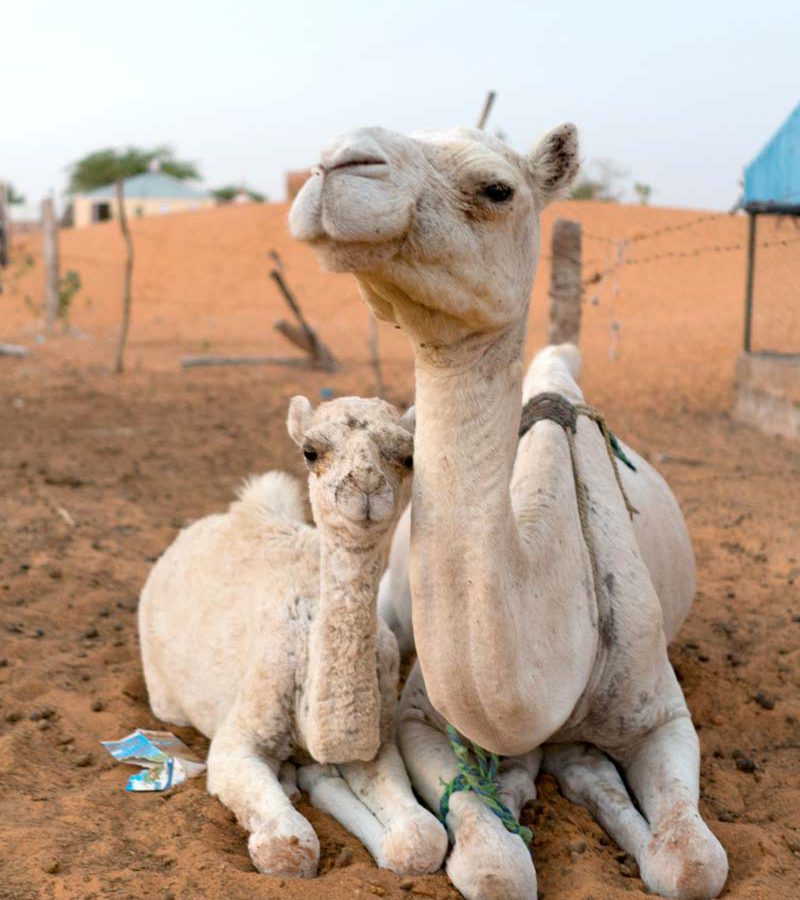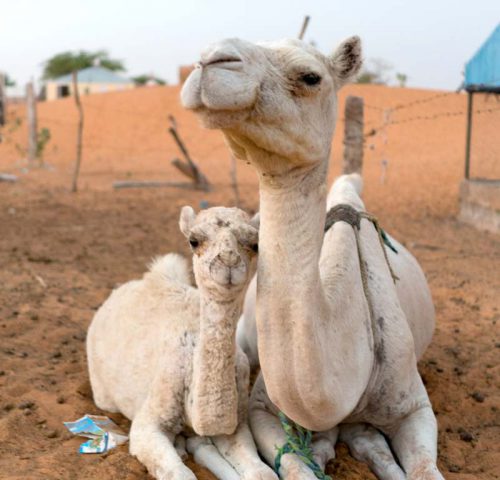What Are The Different Types of Camels?
There are three known camel species, the most common being the one-humped domestic dromedary, also known as the Arabian camel. The other two are the two-humped bactrian camels, a domestic species and the critically endangered wild Bactrian Camel; with fewer than 1,000 remaining in the wild.
Where do Camels Live?
Dromedary camels are typically found in North Africa and the Middle East. There is a small wild population of dromedary camels in Australia that were imported from India in the early 1840s. As a result, Australia now has the largest population of feral camels in the world.
Bactrian Camels are native to the Gobi Desert in China and southwest Mongolia. They can adapt well to extreme fluctuations in temperatures. Often, summer temperatures reach around 45oC and winter temperatures can drop to -30oC.
How Big Are Camels?
An adult dromedary camel stands at around 6.5ft tall from hoof to shoulder and weighs between 300kg to 600kg (660lb-1,320lb).
The domestic Bactrian camel grows to 6ft from hoof to shoulder and weighs 600kg to 1,000kg (1,300lb-2,200lb). Wild Bactrian Camels are slightly smaller and slenderer.
Where do Camels Live?
Camels live in deserts in hot and dry climates. Bactrian camels are native to the Gobi Desert in China and Mongolia and dromedary camels are found in North Africa.
They are placid animals and live in herds which consist of one dominant adult male camel, several females and their calves.
What do Camels Eat?
Camels are herbivores, mostly living on grass, leaves, shrubs and anything else they can find in the desert. They spend most of their days grazing and searching for food. Camels have tough mouths, allowing them to eat and swallow spiky and thorny plants often found in the desert.
What Can Camels See?
Camels have a good sense of vision and can see well during the day and night. They have a wide-angled vision, allowing them to see upcoming predators more easily. Camels have a third eyelid, underneath their outer eyelids, and very long lashes to protect their eyes from the extreme conditions of the desert/dusty conditions.
Can Camels Swim?
Camels can swim; but because they live in the desert, they rarely encounter large bodies of water; so it isn’t common to see them swimming.
A rare breed of dromedary camels, the Kharai camel has been seen swimming up to 3km in India to reach grazing areas.
Five Interesting Camel Facts
- Camel humps store fat, not water which people usually assume.
- Camels communicate with moans and loud bellows. Mothers will grunt to their newborns to communicate with them.
- They have a split upper lip with each half moving separately to allow them to get closer to the ground and eat shorter grass. With food being scarce in the desert this makes it easier for them to eat what is there.
- They only sleep, on average, 1.7 hours a night. The rest of the time they are dozing or awake.
- Their milk has lots of nutritious benefits. It is rich in protein, vitamins and minerals and contains more iron and vitamin C than cow’s milk. Camel milk is also lower in lactose, so is often better for people who are lactose intolerant.
Interested in learning more about camels? Read our article for more fun facts about camels.
SPANA helps working camels all over the world. You can read some incredible success stories on how we have helped care for camels including Deepak who survived a terrible virus in his herd. If you want to help SPANA continue our incredible work why not consider donating to help provide care and treatment for working animals?


